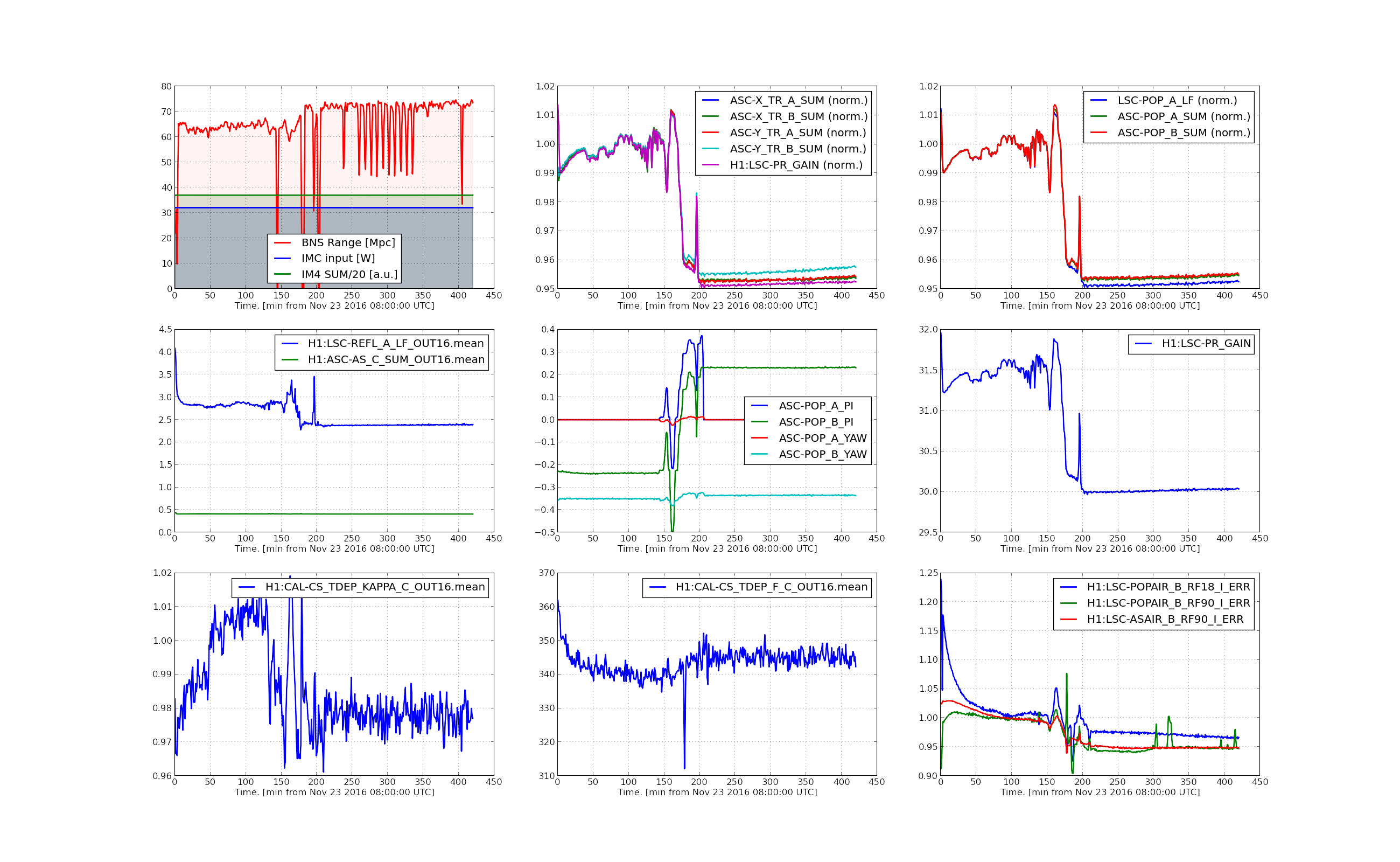Since H1 has been running suprisingly stable (no PIs rung up [speak of the devil---28 perked up as I typed] & SRC1 has been servoing fine), I went ahead and addressed DIFFERENCES on the SDF. Going a node at a time, below I list how many DIFFS each had, and also give a summary note about them as well. Attached you will also find a snapshots for all the DIFFs before I made them GREEN (well, except for SUSETMY...I forgot to snap one).
I reckon some of these will be RED again soon due to changes: PI's always change, Calibration may change, etc.
SUSIM: 1 Total Diffs
ACCEPTED: TRAMP for IM3 Pit
LSC: 6 Total Diffs
ACCEPTED all Gain changes.
ASC: 33 Total Diffs
ACCEPTED: PRC2_Y Filter difference, POP90 Gain, a few offsets, many matrix element changes, and many ODC channels.
REVERTED (2) TRamps
OMC: 3 Total Diffs
ACCEPTED: ODC channels
PSLISS: 1 Total Diffs
ACCEPTED: Ref_signal (has been moving around last few days)
ISIETMX: 9 Total Diffs
ACCEPTED all 9 filter changes (this is due to no BRSx for next few days)---For these Seismic SDFs, we probably want to update these when we are back to nominal environmental conditions and have BRSx back. Since the SEI Config could change a bit depending on weather & health of BRS's, will we NOT monitor these?
SUSETMX: 1 Total Diffs
ACCEPTED: GAIN for the L1 Lock Gain of ETMx (its nominal WAS 0.0)
SUSETMY: 2 Total Diffs (forgot to take snapshot!)
ACCEPTED: P2L & Y2L TRAMPS
ALSEX: 3 Total Diffs
ACCEPTED: These are all "EXTRA_AI" ??
ALSEY: 3 Total Diffs
ACCEPTED: These are all "EXTRA_AI" ??
SUSPROCPI: 4 Total Diffs
ACCEPTED gain & phase changes
CS ECAT PLC1: 8 Total Diffs
All related to "pico"
CALCS: 1 Total Diffs
Value for Pause
CALEX: 1 Total Diffs (forgot to take snapshot!)
Value for SINGAIN
















